One man died and about 30 others were injured, seven of them critically, after a Singapore Airlines Boeing 777-300ER hit severe turbulence over Myanmar on Tuesday. The dead passenger, a British national in his 70s, may have died of a heart issue according to some reports. The aircraft was on a flight from Heathrow to Singapore when it hit the rough air in the early afternoon. It diverted to Bangkok and landed about 3:45 local time. Images show the oxygen masks hanging down and interior panels dislodged in the cabin. It’s not clear if the plane was structurally damaged.
The dead man died on board the plane. On landing, 18 people were taken to a local hospital and 12 were treated at the scene. Crew members were among those injured. There were 211 passengers and 18 crew on the aircraft. “The remaining passengers and crew are being examined and given treatment, where necessary, at Suvarnabhumi International Airport in Bangkok,” the airline said. “We deeply apologize for the traumatic experience that our passengers and crew members suffered on this flight.” Reuters reported a strong storm blew up over the mountains of Myanmar as the plane flew through that area. Early reports based on flight tracking data suggested a 7,000 foot altitude loss was involved but it appears that was initiated by the crew as part of the descent to Bangkok.






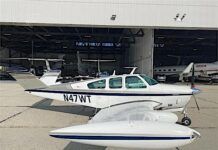








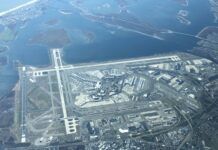



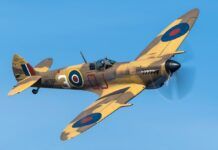







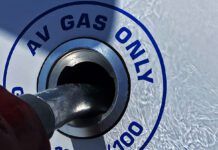






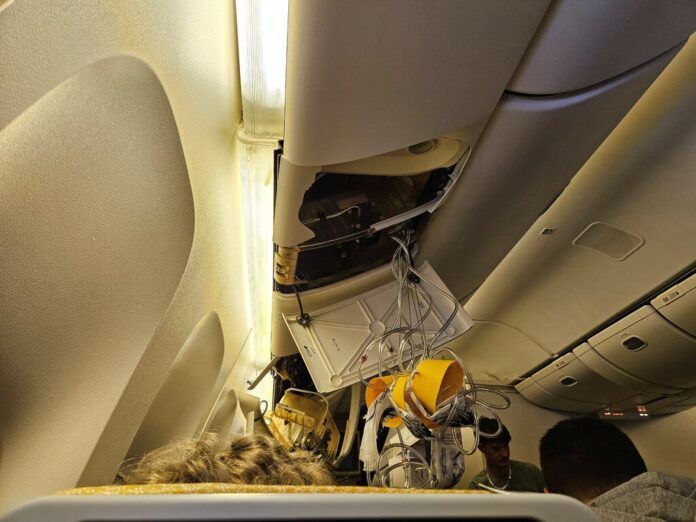

I just don’t “get” why the passengers are allowed to be in their seats unbelted? Even a loosely fitting belt woulda saved much of this carnage. Having a binary caution sign — must be belted, or not — is erroneous. It oughta be STAY in your seat belted OR you can go to the restroom but then sit down and belt in. The FAA needs to step in on this one. It’s not a big thing…unless something like this happens.
On the Boeing door falling off evolution, there was no one sitting next to that hatch. IF they were, I wonder IF — properly belted in — a passenger woulda been restrained enough to remain in the cabin? On the SouthWest jet where a woman was killed, I think she was sucked out the damaged window … at least part of her. Same question?
To your point on the flights I’ve taken recently I hear pilots say something akin to : ‘we’ll see when we can get that seatbelt light off for you…’ as if it’s some inconvenience to pax? A lot do say they recommend having it on at all times – wondering if any 121ers on this forum can shed light on why it having the light off is something they strive to do. Is it to appease a small segment of curmodgens?
In my experience, the airlines tend to restrict or at least discourage ANY type of pax movement – to include using the lavs – when that light is on. I have seen and heard F/As chastise pax who need to take a leak just because the captain hasn’t turned off the seatbelt light. I have hardly ever seen someone get out of their seat just “move about the cabin”. It’s almost always to use the lav. And just like the rest of society F/As cannot be taught good judgement and discretion, they either have it or they don’t.
You missed my whole point. I was referring to the seatbelt light being off meaning you don’t need belts.
WHY would anyone NOT choose to be belted when they’re in their seats. You don’t drive your car around unbelted anymore … why would you immerse yourself in a 3-D environment and not be belted in … even if it’s loosely
My reply was to R N. I have no comment on your point Larry.
Former 121er here – In the initial announcement, they tell all passengers to keep their seat belts fastened unless they need to move about – so even using the lav is strongly discouraged while the seat belt sign is on – pilots know that the passengers will want to use the lav especially during a long flight – so they differentiate between “ok to use the lav,” and “hold it in until it’s safer.” If the light is on all the time, why bother having a light?
Agree, Larry. Unfortunately, a lot of these incidents happen over international waters or in foreign airspace, where the FAA has no jurisdiction. But they could provide leadership to convince other countries and foreign carriers to enforce such a policy. It always amazes me, the number of people who ignore the seat belt sign even when the plane is already bouncing around. Then the poor cabin crew has to jeopardize their own safety by walking around telling everyone to buckle up.
Regardless of where you are the aircraft still has to be operated according to the state of registry regs.
At AC our safety video tells pax to be belted anytime they’re in their seats. The light off indicates a presumed level of safety for pax to go to the head, not to just unbelt. The other aspect is the sign must be off to allow cabin service.
The area where this happened is prone to CBs.. Were they actively looking? I’ve seen some guys “topping” CBs/TCUs … not wise.
Having the seatbelt sign on or off does serve the purpose of showing a difference between (expected) turbulent flight and relatively smooth air. There must be difference that is clearly illustrated. Not only for the passengers, but also for inflight service (cabin crew). The recommendation is to keep your seatbelt fastened at all times while in your seat – this limits injury to yourself or others when an unexpected event happens. Maybe this recommendation should become a bit more towards the “should” or “must” scale regardless
This AvWeb story headline would have us believe that the deceased person died as a direct result of having been battered around by the turbulence. By the time AvWeb published this story there were multiple other news sources including aviation sources reporting that the passenger had died of a heart attack. It is entirely believable that fright brought on by this turbulence event was causal to the heart attack, but it is tabloid journalism to headline this story the way it is presently written. AvWeb readership deserves better.
I think the title seems to describe what happened well: the passenger died in the turbulence. The headline doesn’t say that the turbulence killed the passenger or that the passenger died because of the turbulence – although that seems to have actually happened.
The headline says “killed,” which would be incorrect if he died from a heart attack. As for “eager to turn off the seat belt sign” – passengers have traditionally regarded having to wear a seat belt as akin to torture. But there have been so many hurtful turbulence encounters in recent years, mostly on foreign air carriers, it makes me wonder about foreign pilot awareness of possible turbulence, and reluctance to light the sign unless it looks really bad outside, which is problematic at night.
Have to agree re choice of words in headline. As well the “the dead man died” kinda bad wording – sorry Russ!
Russ thank you for updating the headline and story.
CAT is the best enemy to pilots , unseen, unpredictable and unavoidable. In 1990s Minutes before reaching Heathrow I experienced low level CAT , sadly one passenger was waiting for toilet visit and lost his life I still feel guilty for his death.
I see a lot of pax unbuckle after landing and before the gate. NWA showed me accidents can still happen while taxiing.
I commuted as an airline pilot, usually in uniform. Ex military… Cannot tell you how many times I had to bark at people to “SIT DOWN”! They’d turn to say something … then sit. People don’t realize, when out of their seat, they become part of the problem – falling on others! Ditto laptops etc.
Ahhhh. But how do you know the person was going to die even if there wasn’t turbulence? Or that they died before the turbulence even hit. And if, as postulated, the person had the heart attack due to fright, then they did not die of a heart attack. They died from fright.
‘Fright’ would be listed as a contributing factor, not as a cause.
A lot of semantics.
There is an immediate cause of death (e.g. myocardial infarction) and there are factors that led to that immediate cause of death (e.g., coronary artery disease caused by high blood pressure and high cholesterol caused by a diet high in salt and saturated fat). Otherwise, when a person whose heart is seriously diseased dies of a heart attack after climbing stairs, are we going to say that they died of climbing stairs?
Well, SOMEBODY has to send the first PIREP about the turbulence, and usually it’s the first on the scene. Winds and weather around mountains can change unpredictably and very quickly. Tragic for this unfortunate passenger.
If the Captain mentions something about “getting the seatbelt light turned off” it’s not an order. Personally I keep my seatbelt on as much as possible when flying commercial and lav trips are the only exception. Just trying to cover my personal bases.
I tell my friends, you’re going 560 mph in an aluminum tube, why wouldn’t you WANT to be secured? Darwinism.
Because they think going on an airplane is akin to joyriding in a car. How many people do you think get in an airplane (the pilot being a friend) without really understanding the competency of the pilot?
2 years ago I was on a flight to Kauai Where a number of folks got hurt in turbulence.
I only found this out when my wife woke me up on final approach.
I slept though the whole event. Can you guess ?
I had my seat belt on the whole flight !
I do feel for the cabin crew as they do not have the safe option I have.
The untold story – how the magnificent aircraft from Boeing survived the incredible loads of this CAT incident, a testament to Boeing’s world-leading engineering and manufacturing. We need some sharp US engineers / entrepreneurs to develop a CAT detection system. Must be possible, maybe forward-looking LIDAR? Gust alleviation can be a feedback system in the flight controls. I recall one CAT experience flying from Friedrichshafen, Germany to Vienna in an A320. The flight was quite calm along the northern edge of the Alps, until the pilot loudly announced to sit down, buckle up, and hang on. That’s when the plane rolled rapidly by 45 degrees, great fun for this acro pilot, but shocking for most others. He had been warned by an aircraft ahead. What an amazing piece of machinery to hold up under such stresses. I am proud to say my engineering skills have been used on Airbus, Boeing and Embraer aircraft.
Delta asks you to keep your seat belt fastened even when the sign is off in case of unexpected turbulence like this example you can’t expect someone to wait 4 plus hours to go to the restroom
Unanticipated & undetectable turbulence is a fact of life in air travel. Everyone is told over and over again that they should stay belted when in their seat and that’s pretty much all the airlines can do. Luck and Darwin are in charge from that point onward.
Two comments: 1) the woman who died on Southwest 1380 was belted. 2) This doesn’t sound like CAT. Reuters story refers to a storm and to a line of storms.
Thanks Bill.
CAT implies that the crew at the controls is “innocent” of the responsibility of ensuring navigation away from hazardous weather phenomena.
I hope we learn more about the flight crew. Was the flight crewed by 3 or 4 pilots? If it’s 4 crewmembers does Singapore use two captains and two F/Os or just one captain and two or three type rated F/Os? If just one captain, was he or she on the flightdeck when this happened or on a rest break? Looking at the satellite imagery there was a lot of convective activity in the area where the aircraft experienced the turbulence. Who was flying the aircraft when they were going through this area of weather, the Captain or an F/O? Did they make an any announcements about the possibility of turbulence ahead reminding the passengers about the importance of wearing their seatbelts? Did they tell the flight attendants to discontinue cabin service and take their seats? Did they slow the aircraft to turbulence penetration speed? Were they picking their way around the weather or hoping to top it? An experienced captain would have been doing all of this, an inexperienced F/O might not have been.
I regularly fly SFO LHR in the back of BA A380s. I would probably be dead of a pulmonary embolism by now if I didn’t get up and stretch every now and then. Singapore is an even longer flight. I’m thankful that non-American carriers are less draconian with the seat belt light. I’ll take my chances.
I don’t fly commercial that much but when I do the pilots always announce when they are turning off the seat belt light that they recommend that “passengers keep their seat belts fastened at all times, like we do up here in the cockpit.”
Yeah, get up and stretch, hit the head, but put that seat belt back on.
I have four road vehicles and two aircraft. They all have seatbelts and shoulder harnesses. (Except for the motorcycle which I’m trying to sell; traffic around here has gotten crazy since I bought it.) I use the available passenger restraints religiously, knowing that even they can’t protect me in a catastrophic collision, especially if I’m in a vehicle that’s doing 500kts. In an airliner, I ignore the seatbelt sign: if I’m in the seat, the belt is on. Given its speed, even a small “air pocket” can be injurious; why would I expose myself to that risk?
Most of my fifty years of commercial air travel involved weekly business trips, some international, the primary object of which was to arrive undamaged at the customer site, or to arrive home in the same condition. It baffles me that airliner seat-backs are now fitted with all manner of hard-surface computer/video units instead of airbags like all the cars that those passengers drove to the airport, at much lower speeds.
I’ve made many a flight where, due to known wx, the “Fasten Seat Belt” light was illuminated the entire time. And there was no beverage service. That should be SOP. The captain can turn it off when there’s a high confidence of smooth air ahead, not vice versa.
How often do you as PIC on a long cross-country, unfasten your seatbelt?
Answer to your question is :Never !!!
I am buckled up while seated even when the plane is not moving.
You made a great point regarding air bags, that’s a bit tricky on an aircraft but at least the public deserves passive restraint systems for heads /knees.
It will be interesting to see what the FDR vertical acceleration showed over time. See the FDR report for DCA16IA215 in the NTSB docket for an example (Figure 8), this one was +1.7 to -0.75 (1g being what is regular flight) over about 6 seconds.
How many of the overhead bins opened? Suitcases are heavier than ever, some have steel or aluminum frames. What is the G rating of the overhead bin latch structure?
Anything not secure, including people, are a deadly projectile.
Why does the FAA allow zero knee and legroom, even less when the seat in front of you is reclined? Middle seat, no room for elbows, try getting something out of your pocket, or reaching an item dropped, or removing an item from the bag under the seat in front of you.
Jet engines have allowed the manufacturers and airlines to jam in as many seats as possible. There ought to be a limit on the number of passenger seats in the cabin.
How many folks wear t-shirts, shorts and flip flops when flying?
They have limited survival during an evacuation or crash.
Safe, clean and comfortable? No way from my observations as a frequent flyer.
Why don’t we board from back to front, window, middle then aisle? Let’s limit what can go into an overhead bin. 500 lbs over my head is not safe and I have no room to store my jacket or coat other than on my lap.
Why do we continue accepting this abuse? It is unsafe, unclean and uncomfortable. Quit telling me otherwise.